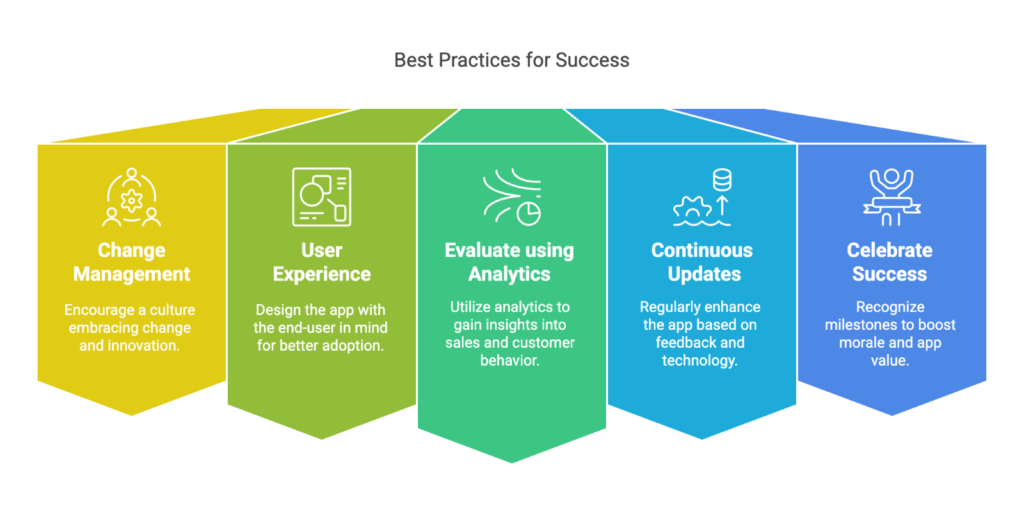Successful FMCG SFA App Implementation: Key Steps and Best Practices

In the fast-moving consumer goods (FMCG) sector, implementing a Sales Force Automation (SFA) app can significantly enhance operational efficiency, improve sales performance, and streamline communication between teams. This document outlines the key steps and best practices for successfully implementing an SFA app in the FMCG industry, ensuring that organizations maximize their return on investment and achieve their sales objectives.
Key Steps for Implementation
1. Define Clear Objectives
Before initiating the implementation process, it is crucial to define clear objectives for what the SFA app should achieve. This includes identifying specific pain points, desired outcomes, and key performance indicators (KPIs) that will measure success.
2. Involve Stakeholders
Engaging stakeholders from various departments—such as sales, marketing, IT, and management—ensures that the app meets the diverse needs of the organization. Their input can help shape the app’s features and functionalities.
3. Choose the Right SFA Solution
Selecting the right SFA app is critical. Evaluate different solutions based on features, scalability, user-friendliness, and integration capabilities with existing systems. Consider conducting a pilot test with a small group of users to assess the app’s effectiveness.
4. Develop a Comprehensive Implementation Plan
Create a detailed implementation plan that outlines timelines, responsibilities, and resources required. This plan should also include training schedules for users to ensure they are comfortable using the new system.
5. Data Migration and Integration
Ensure that existing data is accurately migrated to the new SFA app. This may involve cleaning and formatting data to ensure compatibility. Additionally, integrate the app with other systems (e.g., CRM, ERP) to create a seamless flow of information.
6. Training and Support
Provide thorough training for all users to familiarize them with the app’s features and functionalities. Ongoing support should also be available to address any issues or questions that arise post-implementation.
7. Monitor and Evaluate Performance
After the SFA app is implemented, continuously monitor its performance against the defined KPIs. Gather feedback from users to identify areas for improvement and make necessary adjustments to enhance functionality.
Best Practices for Success

1. Foster a Change Management Culture
Encourage a culture that embraces change and innovation. Communicate the benefits of the SFA app to all employees to gain their buy-in and reduce resistance to new processes.
2. Focus on User Experience
Design the app with the end-user in mind. A user-friendly interface and intuitive navigation can significantly enhance adoption rates and overall satisfaction.
3. Leverage Analytics
Utilize the analytics capabilities of the SFA app to gain insights into sales performance, customer behavior, and market trends. This data can inform strategic decisions and drive sales growth.
4. Regularly Update and Improve
Technology is constantly evolving, and so should your SFA app. Regular updates and enhancements based on user feedback and technological advancements will keep the app relevant and effective.
5. Celebrate Successes
Recognize and celebrate milestones achieved through the use of the field sales engagement app. This not only boosts morale but also reinforces the value of the app within the organization.
Opting for an effective Sales Force Automation app in the FMCG sector can transform sales processes and drive significant business growth. By following the outlined key steps and best practices along with the help of a dedicated field sales app, organizations can ensure a successful implementation that meets their unique needs and enhances overall performance.